9 of the best things to do in Saudi Arabia
From craters worth exploring to vast skyscrapers, there’s plenty to fill your time in this Middle East kingdom
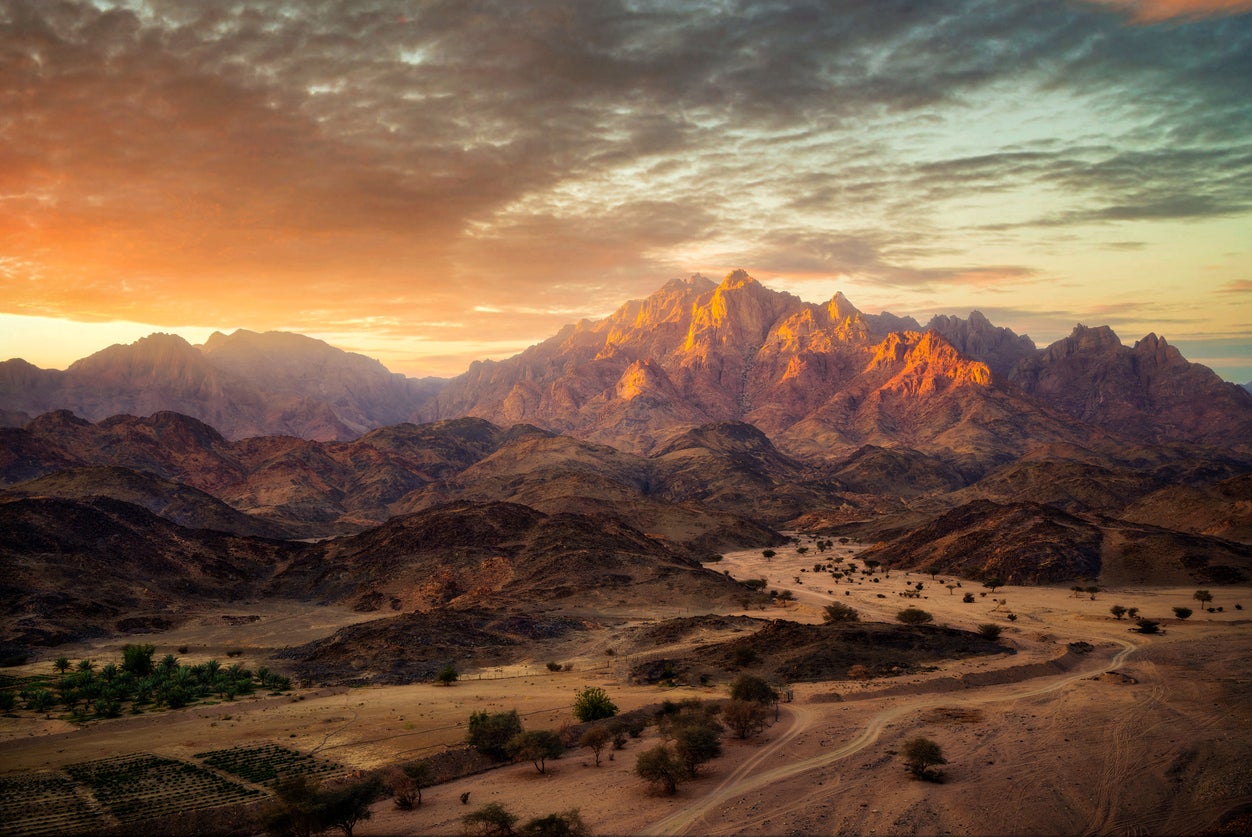
Your support helps us to tell the story
This election is still a dead heat, according to most polls. In a fight with such wafer-thin margins, we need reporters on the ground talking to the people Trump and Harris are courting. Your support allows us to keep sending journalists to the story.
The Independent is trusted by 27 million Americans from across the entire political spectrum every month. Unlike many other quality news outlets, we choose not to lock you out of our reporting and analysis with paywalls. But quality journalism must still be paid for.
Help us keep bring these critical stories to light. Your support makes all the difference.
Though previously hidden behind complicated visa requirements and a previously more conservative society, tourists are waking up to Saudi Arabia’s wealth of natural beauty and sprawling cities.
The nation recently opened up to leisure visitors, issuing its first tourism visas in 2019. Travellers have quickly discovered a striking mix of imposing mountain ranges, verdant oases and vast expanses of desert, punctuated by mud brick villages and archaeological or geographical sites ranging from ancient tombs to enormous volcanic craters.
Contrastingly, the capital, Riyadh, is an eclectic fusion of the old and the new, while Jeddah features beautiful coastal areas and a remarkable old town and places such as Diriyah and Al-Ula hark back to the country’s ancient history.
While the country may have previously been among the last frontiers of mass tourism, those who now take the chance explore it will find a rich variety of things to do – and we’ve rounded up some of the best.
Explore the capital
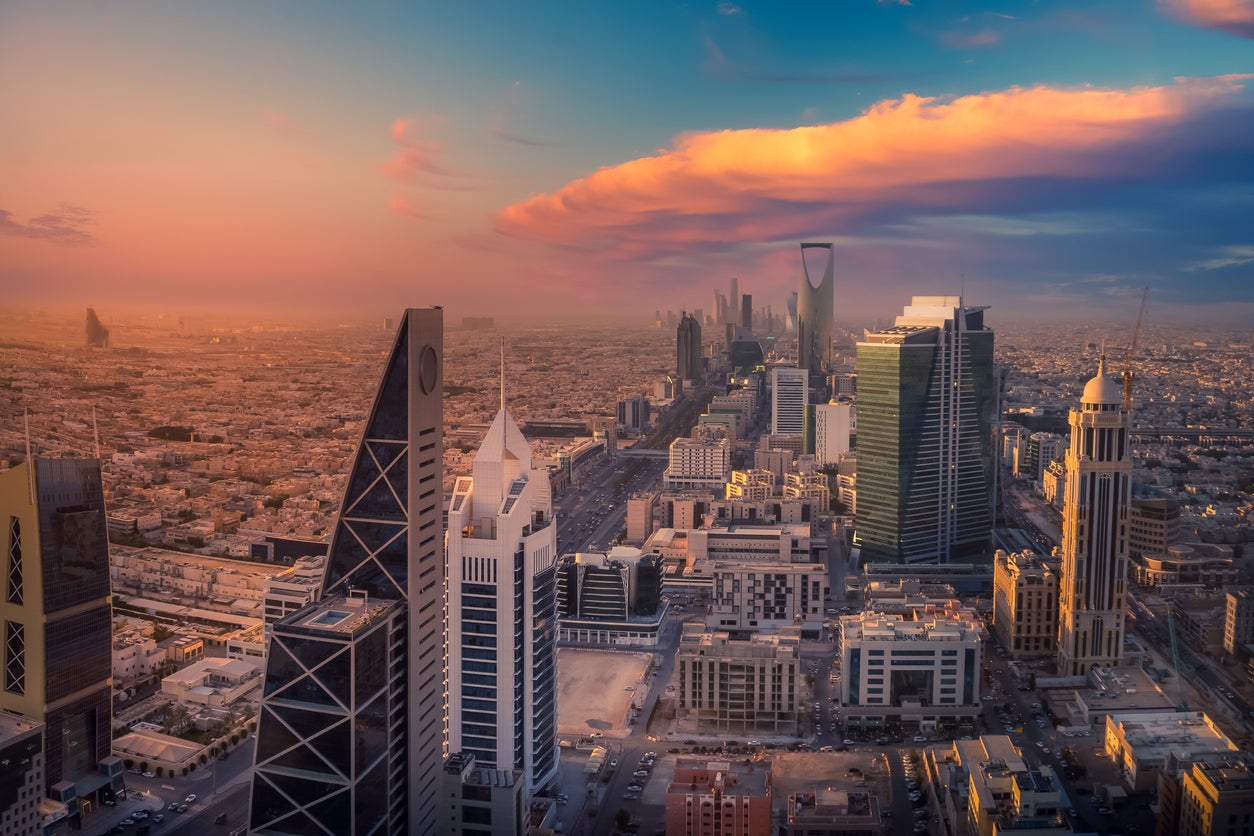
Riyadh is Saudi Arabia’s sprawling capital. Its skyline is populated with soaring skyscrapers, and the 302-metre tall Kingdom Centre is the landmark building, with amazing views available from the 99th-floor Sky Bar and the vast Sky Bridge that runs between its two towers.
Riyadh Boulevard is a 220-acre entertainment complex that is ideal for families, where a selection of shops and restaurants sits alongside tennis courts, indoor ski slopes and the largest cinema in the Middle East. Every winter, the “Riyadh Season” takes place, usually between October and March. It’s a great time to visit to experience a range of the 8,500 events, from winter wonderland theme parks to performances from local artists, musicians and theatre groups.
The Saudi National Museum is a must-see for those who want to discover the captivating history of the kingdom, with eight galleries showcasing around 3,700 artefacts, some dating back to 4,000 BC. To trace back to the city’s roots, visit the Addoho neighbourhood, where palm trees stand alongside traditional Najdi mud houses, or tour the Al Murabba Palace, built by the kingdom’s founder in the 1930s and which showcases some of his personal belongings in several of its opulent rooms.
Read more on North Africa and Middle East travel:
Visit Jeddah
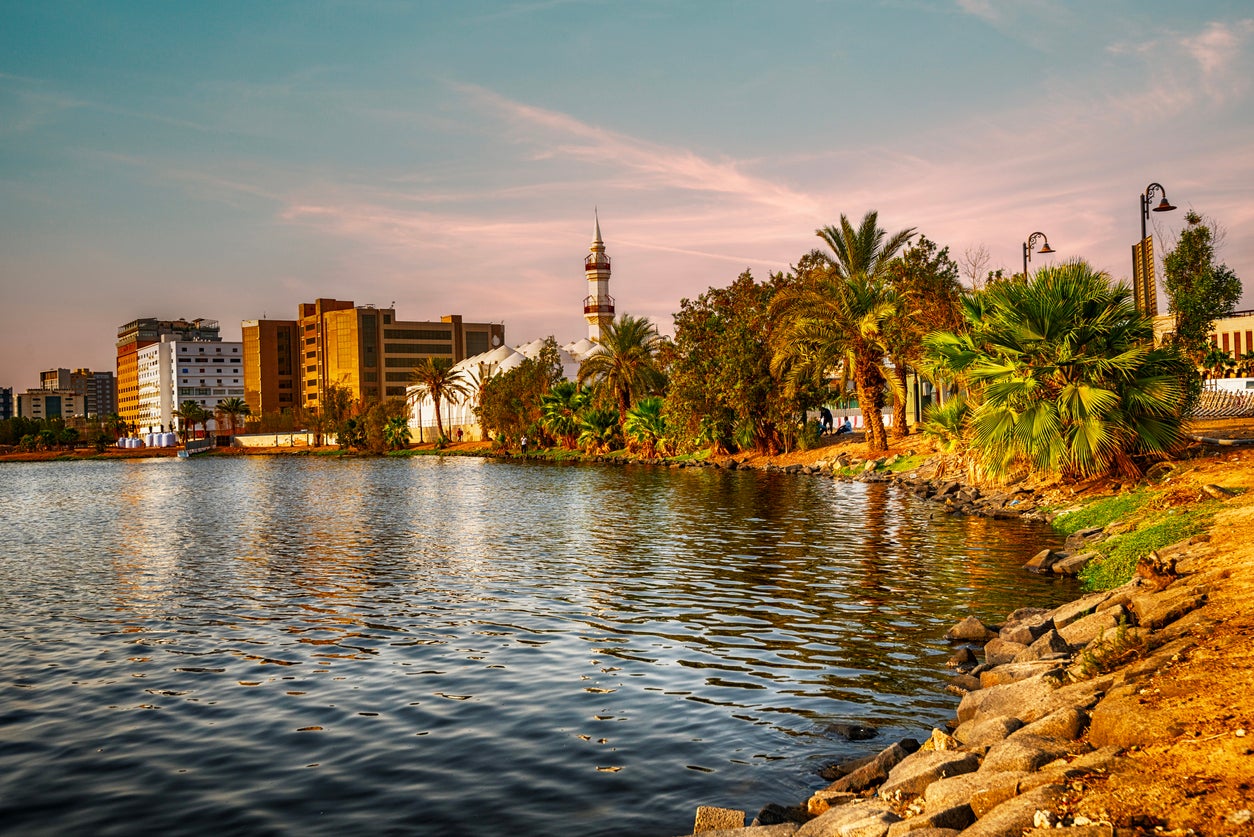
As the traditional gateway to Mecca, Jeddah receives millions of visitors per year, but it is much more than just a stop on the way to Islam’s holiest city. More cosmopolitan and liberal than other parts of the country, Jeddah is a city bursting with character. Its waterfront Corniche area stretches for over 18 miles, with highlights including the amazing floating mosque of Al-Rahmah and King Fahad’s Fountain, the tallest fountain in the world at 260 metres.
Its coastal location means the city has plenty of beaches and dive sites to explore. Al Saif, Alexandria and Obhur are among the best beaches for some peace as you swim in the surprisingly azure waters of the Red Sea. Obhur is also one of the best dive sites in the city, along with Shipwreck Island, the wreck of a Greek ship from 1978. In both, you can swim next to turtles, eels, rare species of fish and even whitetip or bull sharks.
Historic Jeddah is the city’s most characterful neighbourhood, a network of narrow alleys distinguished by Red Sea architecture that often contains rawashin, a form of bay window with latticed carvings that is designed to keep homes cool. You’ll find several souks here, too, including Al Alawi, Al Badu and Qabil (all among the oldest in the city, selling traditional textiles, handicrafts, spices and even gold), with other notable markets at Al Murjan and the Makkah Gate.
Travel to the Edge of the World
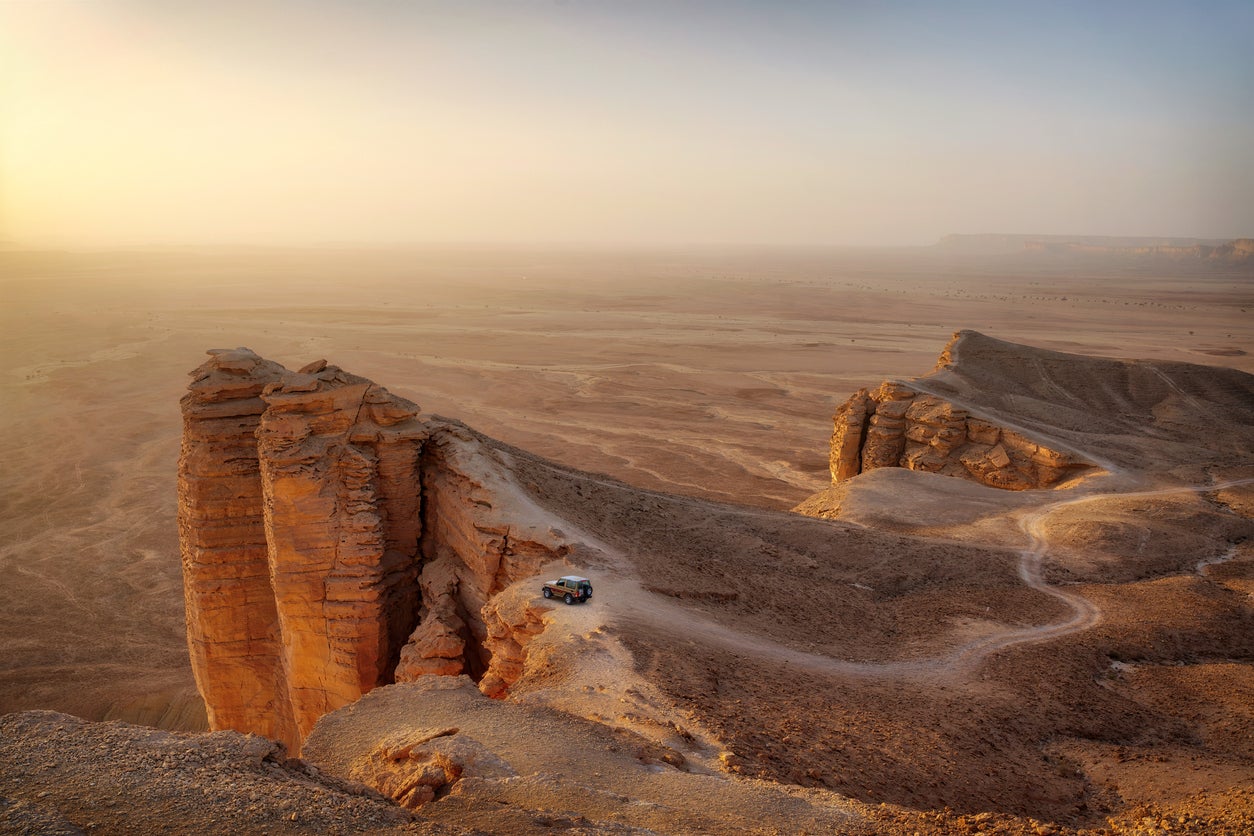
Just over 60 miles away from Riyadh lies the end of the Tuwaik Mountain range, a spot known as the Edge of the World. A series of towering 1,131-metre tall red cliffs that sit above the seemingly unending flat plains of an ancient sea bed, it is a fitting name for a true natural wonder. The site is only accessible by 4X4, and many guided tours offer the chance to visit at sunrise or sunset, providing truly unforgettable views.
Uncover Saudi history in Diriyah
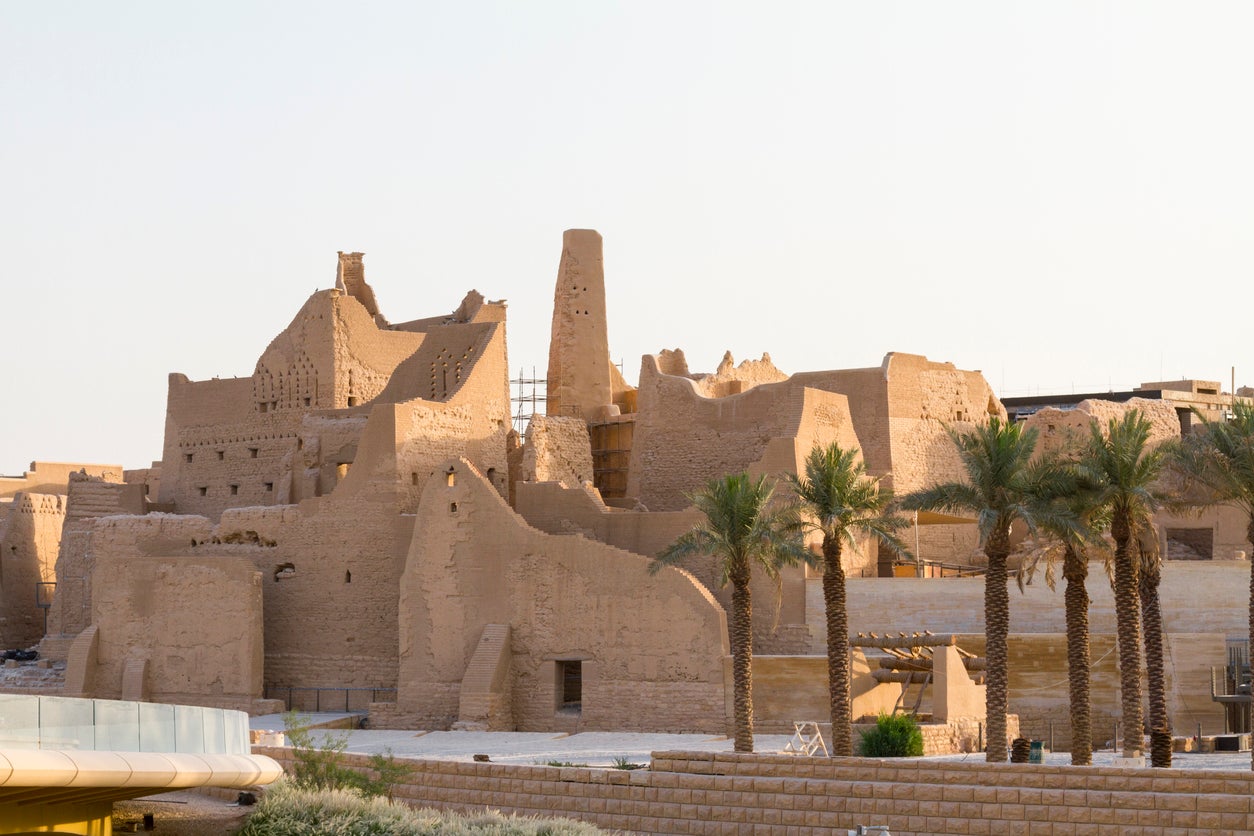
Just 15 minutes northwest of the capital lies Diriyah, the birthplace of modern-day Saudi Arabia. Founded in the 15th century, it was the original home of the House of Saud (the ruling royal family). Today, Diriyah is at the centre of the country’s expansion of its tourism industry, and though events such as the Diriyah Season attract musical acts such as John Legend, the city is most famous for its At-Turaif district, the historic centre of the town that was the first capital of the Saudi dynasty.
Unesco-listed since 2010, At-Turaif is a well-preserved labyrinth of mud-brick buildings, now essentially an open-air museum showcasing Saudi history and Najdi tradition, from architectural styles to cuisine. The highlight is the four-storey Salwa Palace, the largest structure and once the centre of royal power, which is now a museum. Other notable structures include the Saad bin Saud Palace and the mosques of Muhammad bin Saud, al-Zawiharah and al-Sarikhah, which have been renovated while incorporating modern Arabian architectural styles.
Visit Al-Ahsa
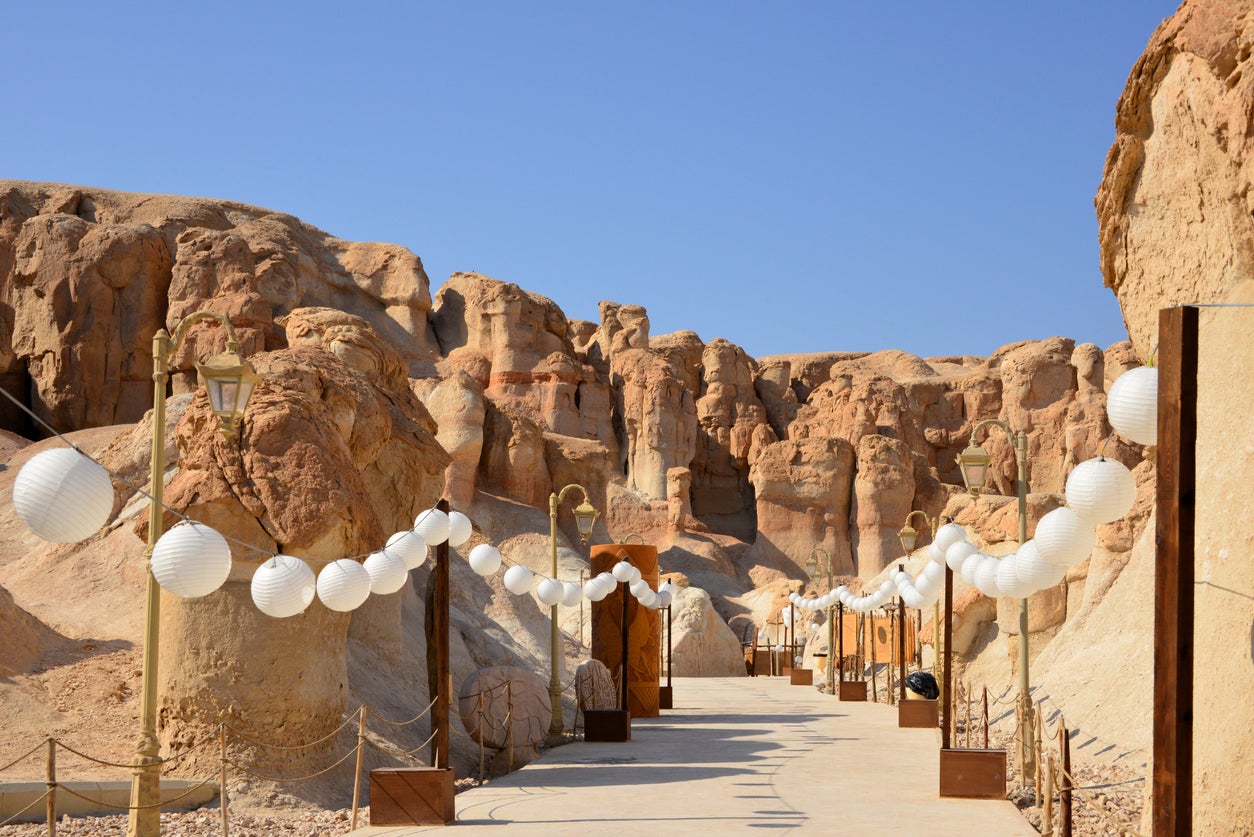
Al-Ahsa is home to desert cities, over 2.5 million palm trees, deserted mountains, a part of the Rub Al Khali desert and is the largest oasis in the world. There are over 100 natural springs here – of which Al-Jawhariah, Um Sabaa and Al-Khodoud are some of the most popular – and it also contains one of the few natural bodies of inland water in the gulf, the magnificent Yellow Lake. The 200-metre tall Al Qarah mountain and the surrounding limestone cliffs hide several caves and passageways, and offer sweeping views after a gentle hike, while Uqair Beach, one of the only beaches the region, provides golden sand for relaxation and swimming on the shores of the Arabian Gulf.
The region’s settlements and historic sites greatly contributed to its Unesco designation. The Qaisariya Souq (a 200-year-old market with over 400 stalls), the Ibrahim Palace (considered an early masterpiece of Islamic architecture) and the Khuzam Palace (city walls built around the 18th century), attest to years of carefully preserved modern history, while the Jawatha Mosque, one of the oldest in the world, dating back to around 635 AD, and the Archaeological and Heritage Museum are worth visiting to discover the region’s ancient past.
Discover the past at Al-Ula
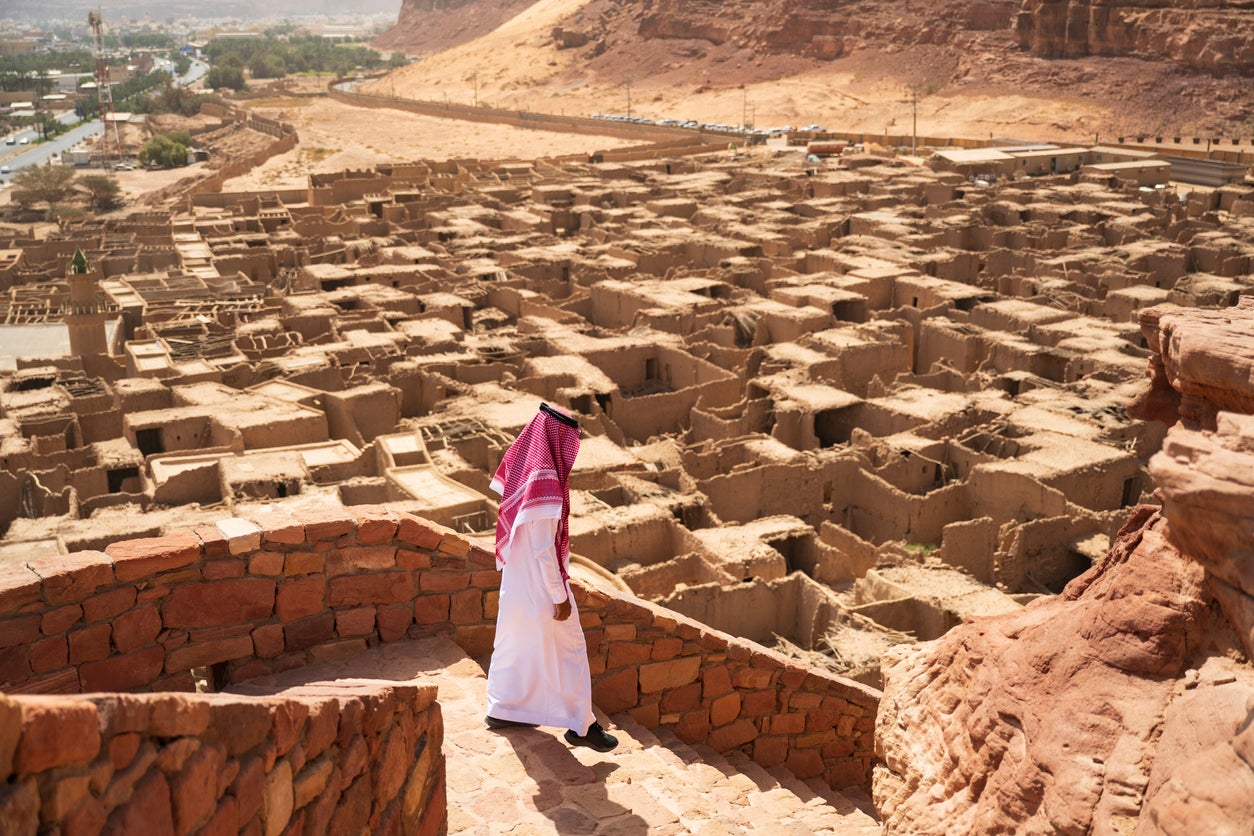
The city of Al-Ula is a another settlement whose fame has been increased by the presence of an important historic centre and the notable landmarks that surround it, including a verdant oasis and the magical Elephant Rock, a vast solitary rock surrounded by desert that makes for an amazing place to watch the sunset.
The main site within the city is an old town area, which dates from the 12th century but was inhabited as recently as the 1980s. Now a renovated maze of 900 stone and mud brick houses, 400 shops and several town squares, it was once a bustling town lying on the pilgrimage route to Mecca, and this history can be seen during guided tours offered by locals, many of whom lived there before being moved into more modern housing.
Al-Ula was also once the capital of even older civilisations, and it still contains various homages to these ancient people, from the rock carvings at ancient Dadan and Jabal Ikmah to the burial sites at Hegra.
See the old tombs of Hegra
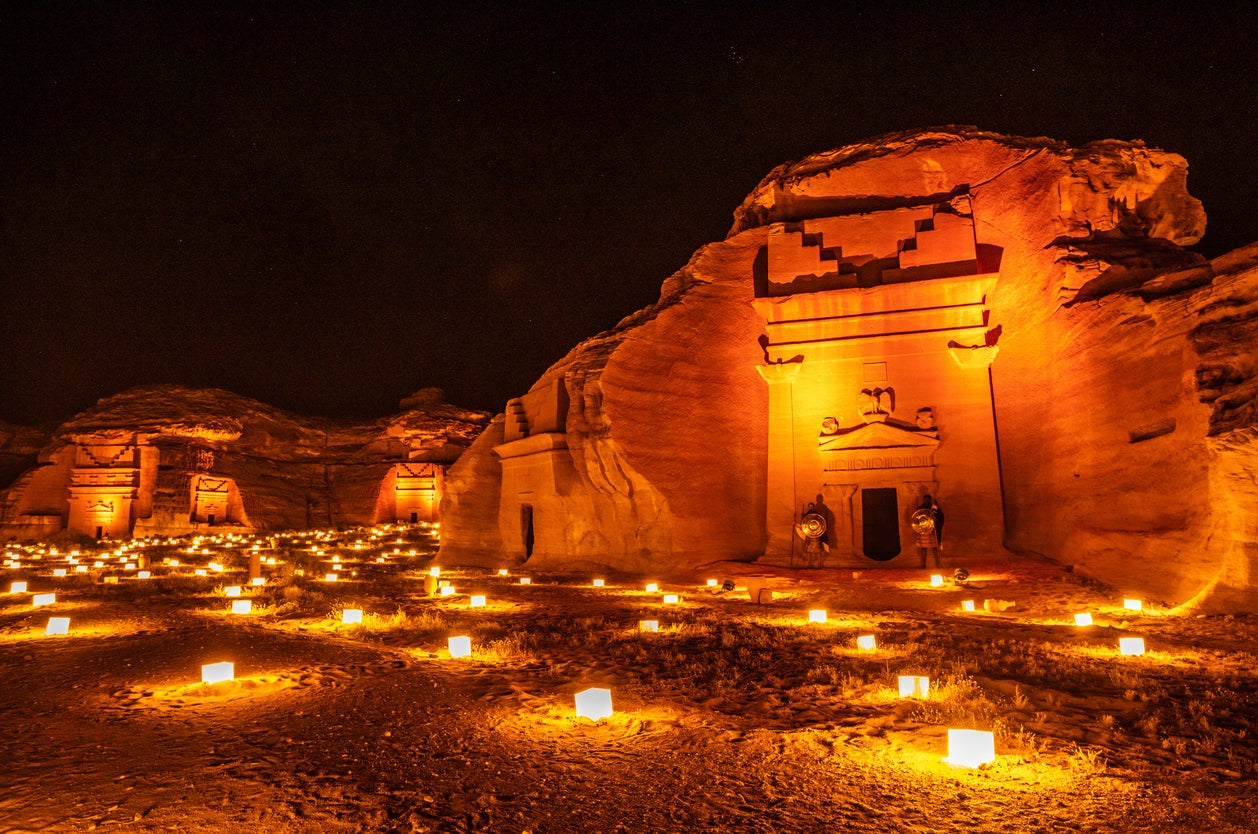
The Hegra Archaeological Site spans almost 130 acres of the Al-Ula desert and dates back to the 1st century. It is the largest conserved site of the Nabataean civilisation (the same people that built Petra in Jordan), home to 131 tombs well-preserved tombs that have complex designs carved straight into the sandstone. Though separated into various clusters, the Tomb of Lihyan, Son of Kuza (also known as The Lonely Castle) is particularly well-known as it sits alone away from the others and is the most intricate. Tours usually include this mausoleum and two other clusters (named Jabal Al Banat and Jabal Al Ahmar), as well as Jabal Ithlib, a mountain area where the Nabataeans practiced their religion.
See the nation’s deserts
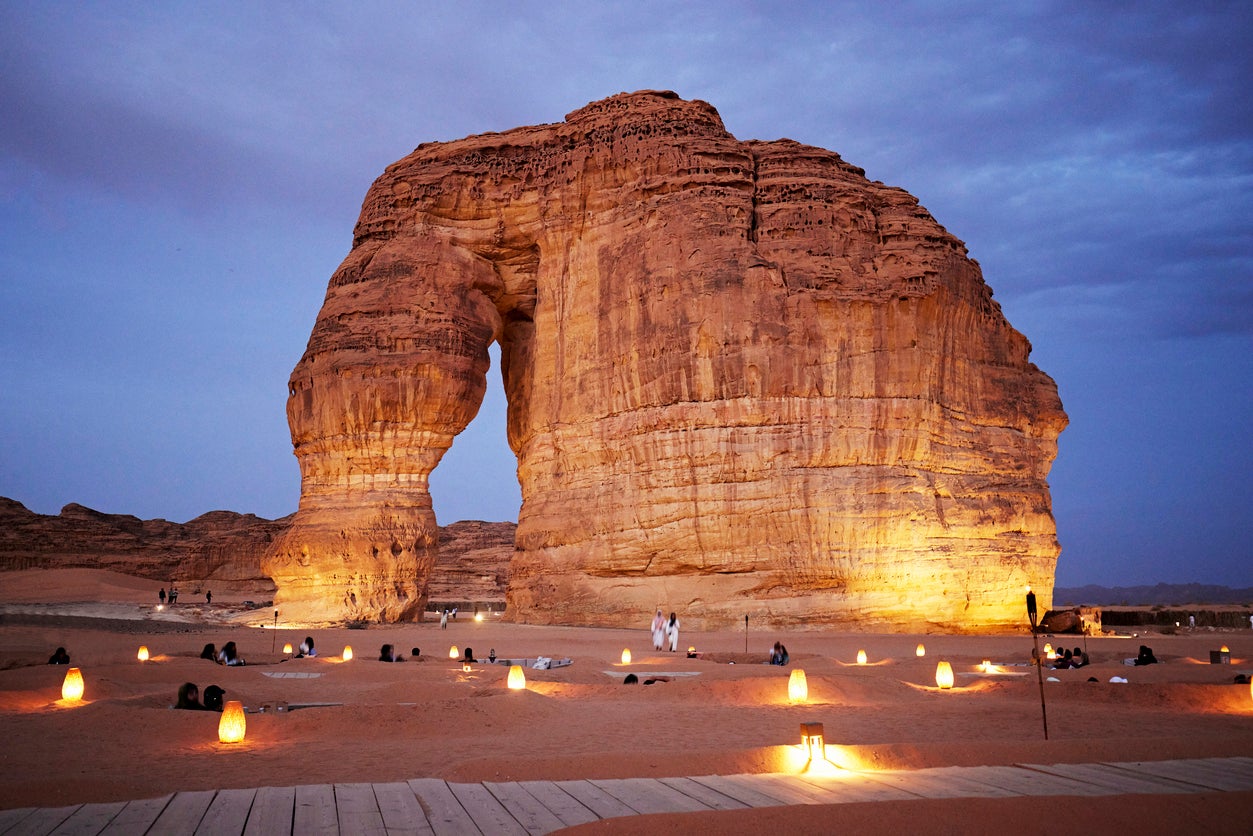
There are plenty of desert areas in Saudi Arabia, and one of the most impressive is the Rub Al Khali, the world’s largest area of continuous sandy desert. Found in the south of the country and also stretching through parts of Yemen, Oman and the UAE, the region is home to dunes that reach up to 250 metres high. While remarkably tall, this is nothing compared to the towering dune fields in The Great Nufud Desert – an area northwest of Riyadh – which range between 700 and 1,000 metres. In parts, this desert is a land of rocky canyons spread among red sands, most famous for the ancient art carved into the rock at Jebel Umm Sinman.
Guided tours are the best way to see the desert, though individuals and groups can rent vehicles to traverse the dunes. Camping is popular in all of the desert areas, with experiences such as Bedouin-style nights under the stars, sitting around a fire and sampling traditional cuisine. Dune buggy rides, 4X4 safaris and camel riding are on offer.
Visit the Al Wahbah crater
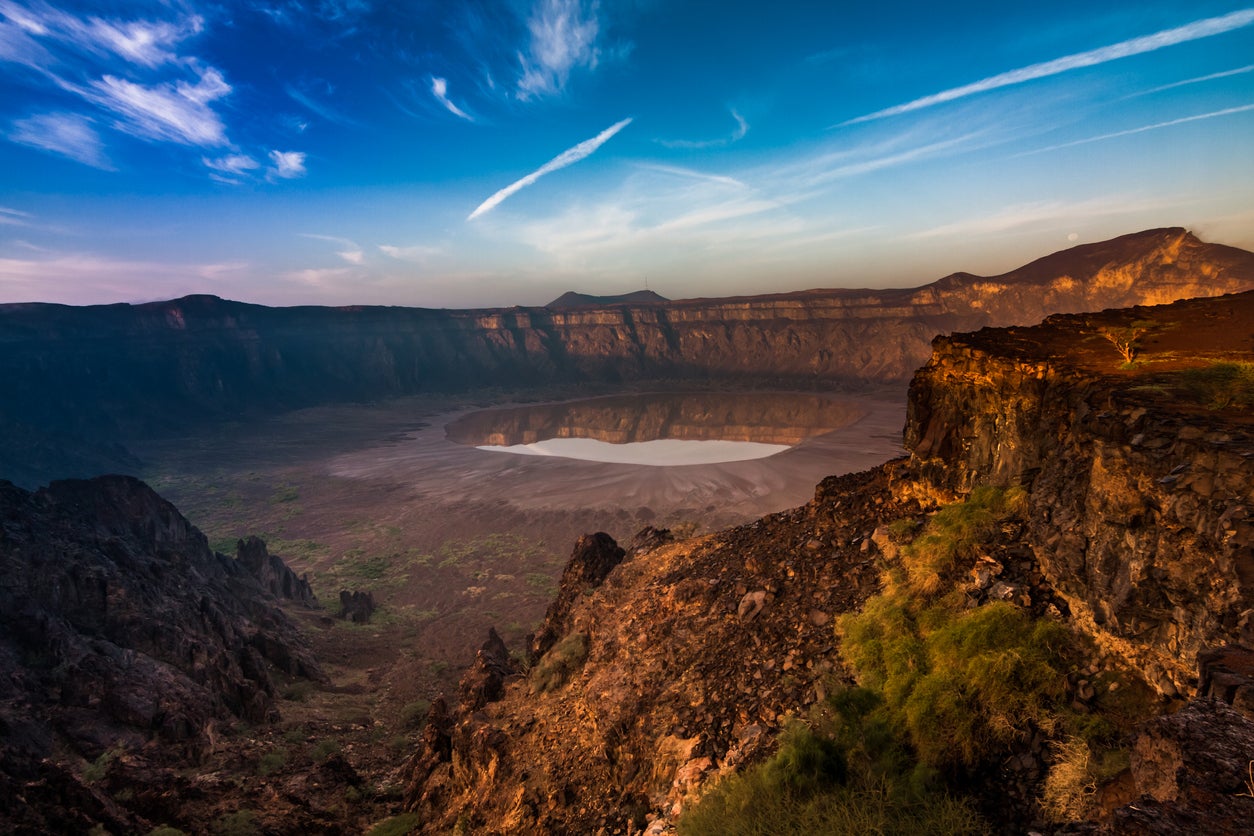
One of the country’s natural landmarks, the Al Wahbah crater is thought to have been formed by a large steam explosion caused by volcanic activity. Located in an otherwise barren landscape, the crater is 1.2 miles wide, almost 400 metres deep and home to a dazzling white salt flat at the bottom, which visitors can hike down to. Aside from the salt patterns, the site is also known for the wide variety of rock formations and vegetation around the crater.
Read our reviews of the best winter sun hotels
Join our commenting forum
Join thought-provoking conversations, follow other Independent readers and see their replies
Comments